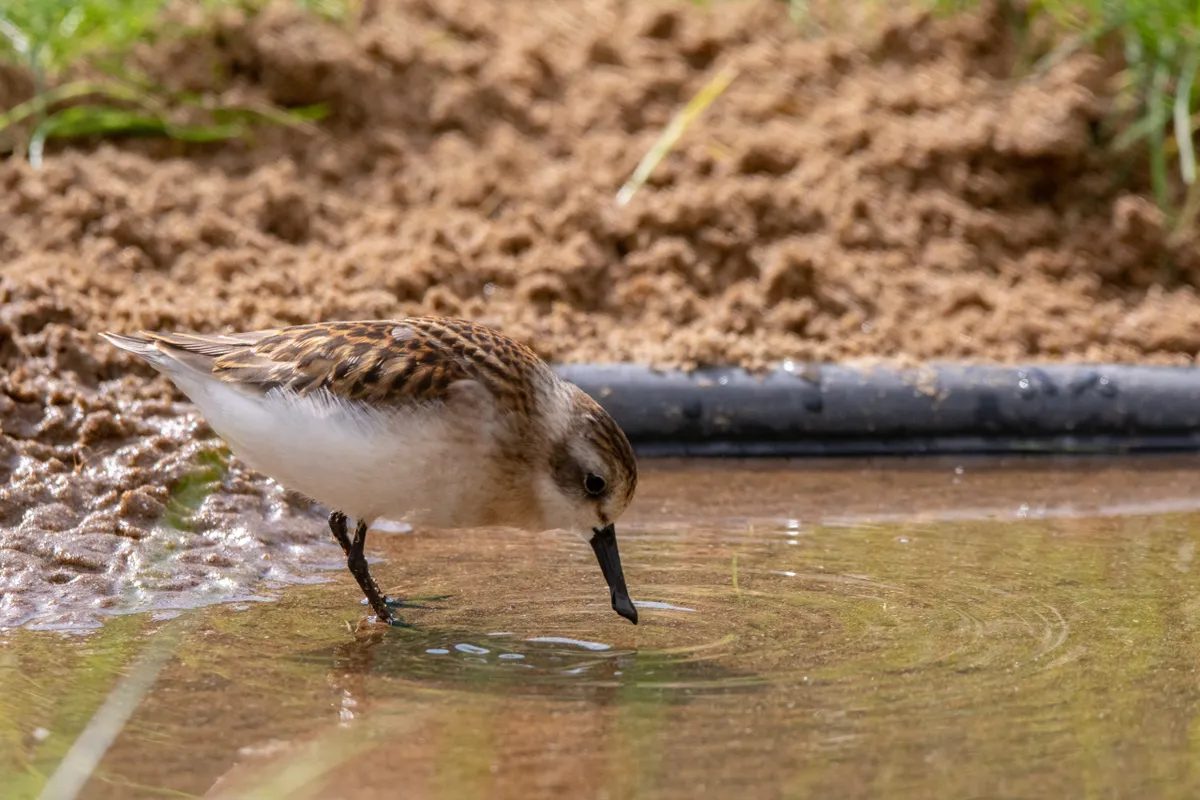In a milestone for conservation, two spoon-billed sandpiper chicks have been hatched in captivity for the first time. The chicks belong to the only captive flock in the world at WWT Slimbridge in Gloucestershire, which was established in 2011.
With only 200 breeding pairs left in the wild, the spoon-billed sandpiper is critically endangered, and their population has seen declines of up to 25% every year.
More related content:
The captive flock at Slimbridge has been established as a safety net to preventing the birds’ complete extinction, should they become absent in the wild.
But the to road successfully hatching and rearing the chicks in captivity was a long one. Conservationists at Slimbridge tried for 8 years to successfully breed the birds before realising that the spoon-bills needed artificial light to help recreate conditions along their migratory flight path.
“In the wild they migrate from tropical Asia to Arctic Russia to breed, experiencing huge differences in temperature, habitats and daylight along their 8,000km route,” explains WWT Conservation Breeding Manager Nigel Jarrett.
“Each of those factors could play a part in getting the birds’ hormones surging, so we’ve done our best to recreate that experience in aviaries in Gloucestershire. I’m glad to say that, with the help of special lightbulbs and timer switches, along with a lot of sand and netting, we seem to have finally pulled it off.”

It is thought that this technique could well be a major breakthrough for conservation breeding, which could help to save other migratory species.
Prior to this milestone, the flock laid just 12 eggs at Slimbridge, with a mere 5 hatching, and no surviving chicks.
However, as the two latest additions to the flock at Slimbridge now have their juvenile plumage, it seems that they are adapting well to their environment, and it is hoped that they will go on to adulthood.
In the wild, the birds’ range covers a vast distance, from far east Russia along the Chinese coast, to Myanmar and Bangladesh. Conservationists and volunteer ornithologists have been monitoring the birds across this area, identifying the threats that they face in the wild and discovering the best means of countering them.
Alongside this small but pivotal step toward their continued survival in captivity, it is hoped that things could be looking up for the wild population of spoon-billed sandpipers, with their population possibly starting to recover thanks to the efforts of conservation organisations around the world, including the RSPB, Birds Russia, and WWT.
WWT bird rearing experts travelled to the remote Chukotka region in Russia — the only known breeding ground of the bird — each summer to take wild-laid eggs to hatch and rear in the safety of aviaries, before returning them to the wild on fledging. The technique — known as headstarting — has boosted the number of spoon-billed sandpipers bred each year in the wild by a quarter.